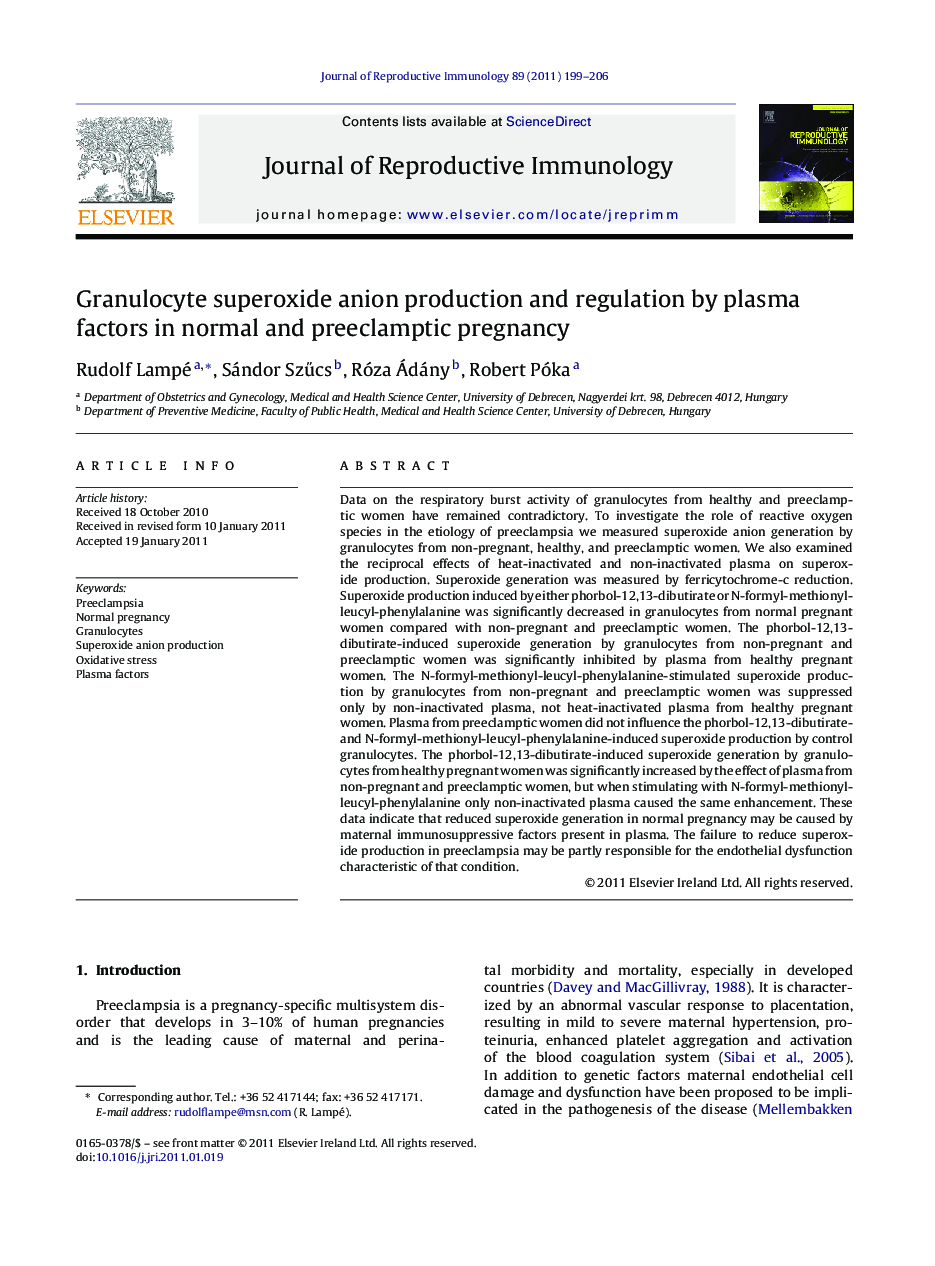| Article ID | Journal | Published Year | Pages | File Type |
|---|---|---|---|---|
| 3965815 | Journal of Reproductive Immunology | 2011 | 8 Pages |
Abstract
Data on the respiratory burst activity of granulocytes from healthy and preeclamptic women have remained contradictory. To investigate the role of reactive oxygen species in the etiology of preeclampsia we measured superoxide anion generation by granulocytes from non-pregnant, healthy, and preeclamptic women. We also examined the reciprocal effects of heat-inactivated and non-inactivated plasma on superoxide production. Superoxide generation was measured by ferricytochrome-c reduction. Superoxide production induced by either phorbol-12,13-dibutirate or N-formyl-methionyl-leucyl-phenylalanine was significantly decreased in granulocytes from normal pregnant women compared with non-pregnant and preeclamptic women. The phorbol-12,13-dibutirate-induced superoxide generation by granulocytes from non-pregnant and preeclamptic women was significantly inhibited by plasma from healthy pregnant women. The N-formyl-methionyl-leucyl-phenylalanine-stimulated superoxide production by granulocytes from non-pregnant and preeclamptic women was suppressed only by non-inactivated plasma, not heat-inactivated plasma from healthy pregnant women. Plasma from preeclamptic women did not influence the phorbol-12,13-dibutirate- and N-formyl-methionyl-leucyl-phenylalanine-induced superoxide production by control granulocytes. The phorbol-12,13-dibutirate-induced superoxide generation by granulocytes from healthy pregnant women was significantly increased by the effect of plasma from non-pregnant and preeclamptic women, but when stimulating with N-formyl-methionyl-leucyl-phenylalanine only non-inactivated plasma caused the same enhancement. These data indicate that reduced superoxide generation in normal pregnancy may be caused by maternal immunosuppressive factors present in plasma. The failure to reduce superoxide production in preeclampsia may be partly responsible for the endothelial dysfunction characteristic of that condition.
Related Topics
Life Sciences
Immunology and Microbiology
Immunology
Authors
Rudolf Lampé, Sándor Szűcs, Róza Ádány, Robert Póka,
